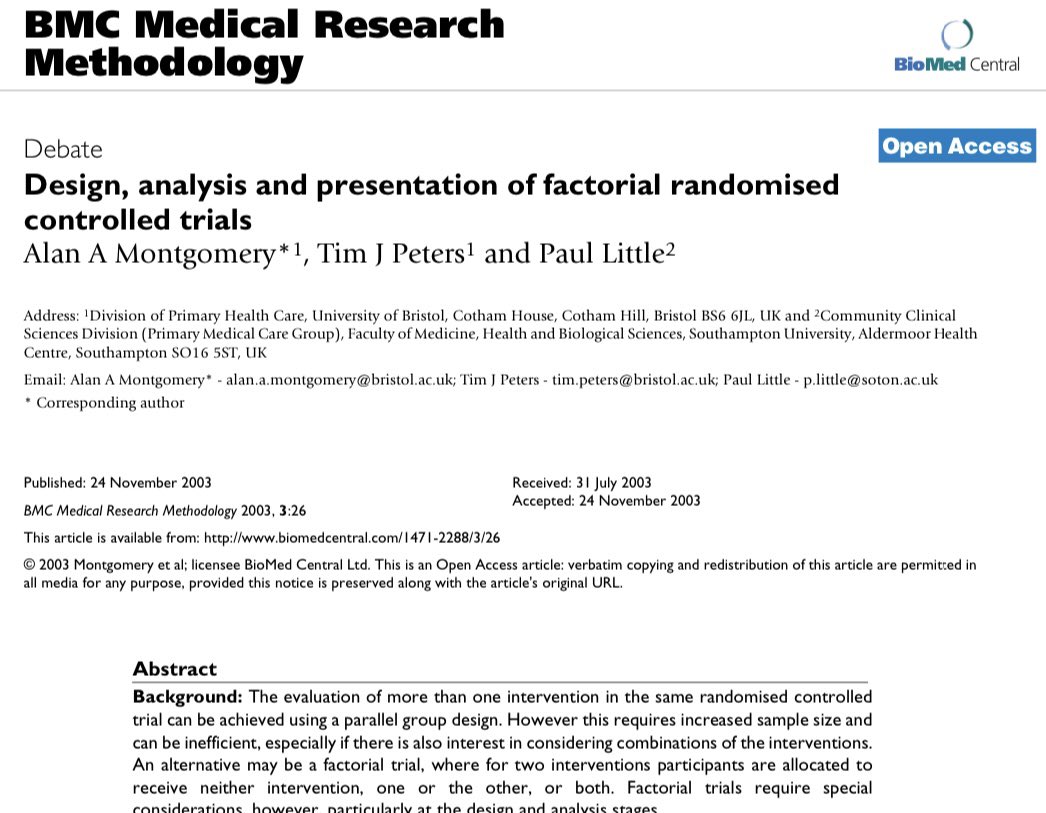
The #FactorialTrial design is one of the very original efficient trial designs yet its potential often remains underused 1/7
#MethodologyMonday
#MethodologyMonday
In a #FactorialTrial you can evaluate the effectiveness of more than one treatment simultaneously and for the same sample size requirements as doing a single trial 2/7
bmcmedresmethodol.biomedcentral.com/articles/10.11…
bmcmedresmethodol.biomedcentral.com/articles/10.11…

For a factorial trial of say 2 treatments, patients are allocated to 1 of 4 groups: Gp1 receives both treatments A and B; Gp2 receives only A; Gp3 receives only B; and Gp4 receives neither A nor B (the control) 3/7
cambridge.org/core/services/…
cambridge.org/core/services/…

The underpinning assumption that allows the efficiency in a factorial trial is that the treatments under investigation have independent effects of one another or have different mechanisms of action (ie they do not interact) 4/7
There have been many trials that have managed significant efficiencies using a factorial design - allowing multiple treatments to be assessed simultaneously eg the UK BEAM trial which evaluated different trts for back pain in a 3x2 factorial design 5/7
bmj.com/content/329/74…
bmj.com/content/329/74…
However, it is always important to check if any interaction has occurred in your factorial trial - if you don’t this can make analysis and interpretation less robust - see reviews of factorial trials below 6/7
Review 1) jamanetwork.com/journals/jama/…
Review 2) jclinepi.com/article/S0895-…

Review 1) jamanetwork.com/journals/jama/…
Review 2) jclinepi.com/article/S0895-…


To help promote better analysis and reporting of factorial trials, there is a CONSORT extension under development (the RAFT project). Please follow the @nottingham_CTU for updates 7/7
nctu.ac.uk/other-research…
nctu.ac.uk/other-research…

• • •
Missing some Tweet in this thread? You can try to
force a refresh










